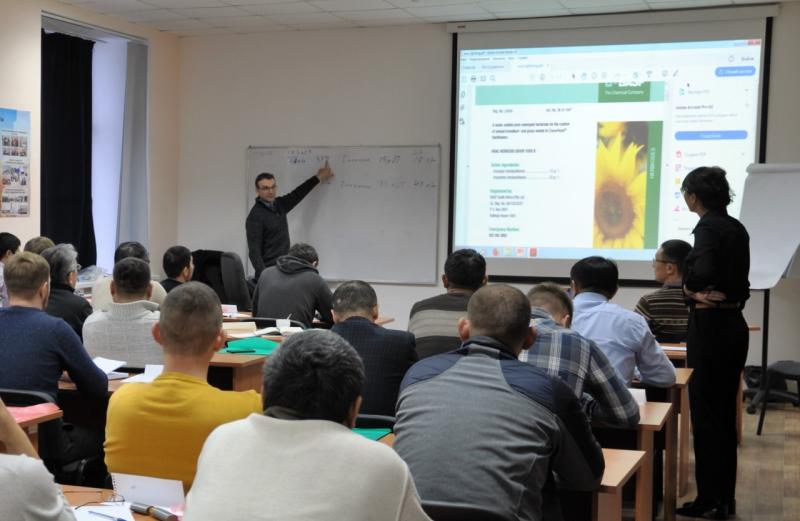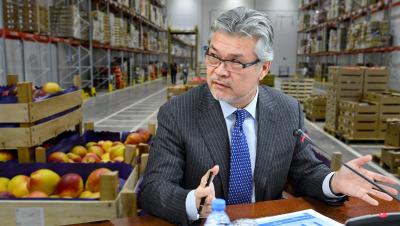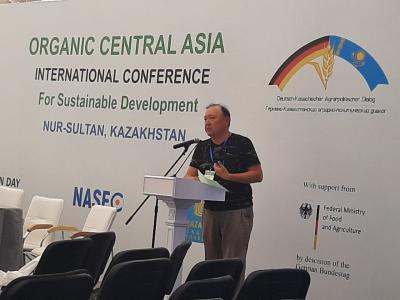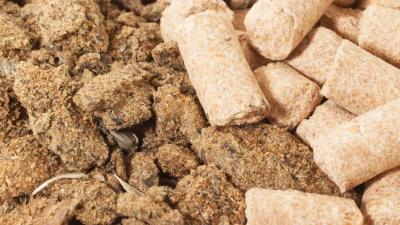
Zero-till technology, known as No-Till, reflects the whole essence of farming - the soil is not plowed or mechanically cultivated. The soil surface is covered with a sort of protective blanket - mulch, shredded plant residues. Farmers who use the new method on their farms name the advantages as prevention of wind erosion, preservation of maximum volume of moisture in the soil, as well as economic benefit on fuel and equipment. And most importantly, according to agrarians, as a result of the abandonment of mechanical impact, increases soil fertility.
In Northern Kazakhstan a few years ago they started to apply the new technology. Although many spoke of the positive experiences, most domestic farmers are still hesitant to abandon traditional farming methods in favor of No-Till.
What are the advantages of No-Till? How has the new technology helped Canadian farmers increase crop yields and become one of the leaders in no-till farming?
This was discussed at the webinar, organized by the German Agrarian Center and the Association for Sustainable Development of Agricultural Methods and Technologies in Kazakhstan. The main speaker - John Gehrer, the international expert in the field of crop production, who has an extensive experience both in Canada and Kazakhstan, on the example of his personal farm and experiments in different countries, told the Kazakh farmers about the possibilities of No-Till for profitable farming.
A prelude for the introduction of new technology were dust storms that took place in Canada and the U.S. in 1930, stated John Gehrer. Because of soil degradation and drought, wind erosion then became a real disaster, according to the agronomist. Yields were plummeting, and the environmental disaster kept the field from being worked. Many farmers went bankrupt. And to save the farms that had fed families for generations, a solution had to be found. Even then landowners began to realize that they needed to change their farming tactics, to minimize tillage.
As the Canadian expert noted in his lecture, it is scientifically proven that zero tillage is well suited for arid regions. The new type of farming is recommended for agricultural lands where soil degradation is observed.
Now No-Till is the most common technology in Western Canada, says the expert. With the help of no-till farming, local farmers have managed not only to increase the yield, but also soil fertility, emphasizes John Guerer.
The speaker also talked about experiments to implement No-Till in different geographic locations.
"For example, in the semi-arid region of northern India, the Indo-Ghana Plain, 15 years of No-Till application resulted in a 1.5-fold increase in soil organic carbon content, up to 35%. Sequestered about 500 kg of carbon per hectare per year. The water-holding capacity of the soil also increased. Due to the increased porosity of the soil, water is no longer flowing around the field and moisture is retained," the speaker says.
The effectiveness of the technology for moisture accumulation was also confirmed by scientific research of the Alberta Institute. A comparative analysis of water infiltration showed that the traditional treatment of rainfall reaches the soil in 8-10 minutes, while no-till technology soil was moistened in just 20-35 seconds.
Another advantage of no-till Canadians call the proven lower carbon dioxide emissions into the atmosphere. The scientific experiment was conducted using different technologies. The mechanical plow treatment emitted 134% carbon dioxide, the discing was 70%, the minimum treatment was 54% and the lowest figure, 27% when No-Till was used.
"So the feasibility of switching to No-Till from an environmental standpoint has also been proven. Yes, there is gas emission with zero-till too, but if you cultivate cover crops after harvest, the carbon dioxide could be used by those cover crops," the expert noted during the lecture.
That said, No-Till cannot yet solve some problems, particularly soil salinity, especially in arid regions, the soil scientist admitted.
"Given the increase in soil porosity as a result of no-till, we hoped that water would penetrate the soil better and the salts would escape to the lower soil layers. However, this did not happen. In arid regions, the amount of rainfall was not enough to wash away the salts. It did not worsen the situation, but did not solve the salinity problem either. On the other hand, phosphorus washed away from the surface layer during rainfall. The phosphorus was dissolved in the water during runoff and went down to the lowlands," the expert says.
According to John Gehrer, Canadians, who have achieved record highs in agriculture over many years of no-till farming, are now concerned about other things - the loss of soil nutrients with each harvest.
"With each harvest, a huge amount of nutrients - nitrogen and phosphorus - is taken out together with grain, wheat, rapeseed. Only in animal husbandry it is possible to process certain waste products, for example, to obtain fertilizers from manure and make up for the resulting deficit of microelements. Man consumes agricultural products, but there is no return. Therefore, all efforts should be made to restore soil micronutrients after each harvest", - says John Gehrer.
The speaker again confirms his thoughts with facts. During the scientific calculations specialists found out that 25 tons of corn contains 625 kg of nitrogen and 250 kg of phosphorus. This is the amount of nutrients that is exported with the harvest.
The lectures of Canadian expert reinforced knowledge of domestic farmers, who, by the way, had demonstrated a keen interest to the proposed topic. The farmers eagerly asked questions and asked for advice.
"There is no longer any doubt in the effectiveness of No-till. Definitely, if we want to preserve soil fertility, we must not disturb its integrity," concluded the expert.












































Обсуждение